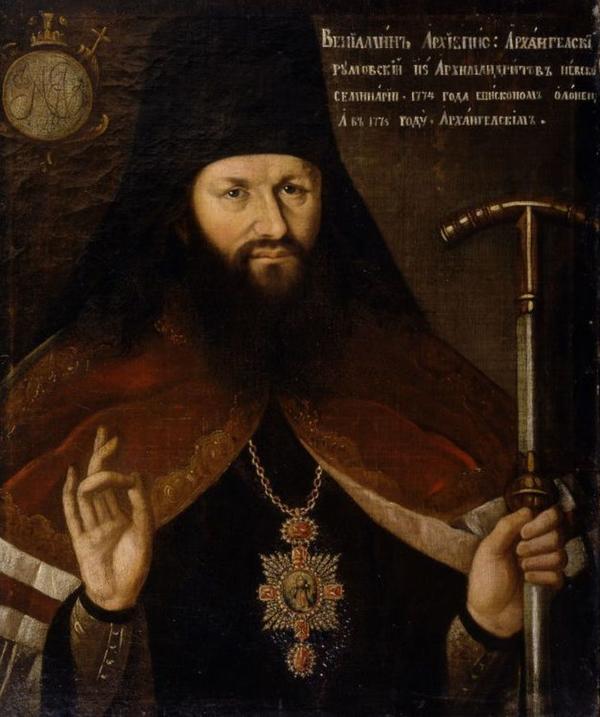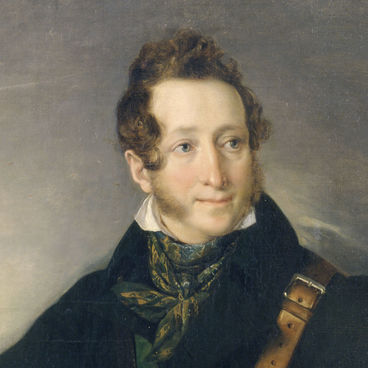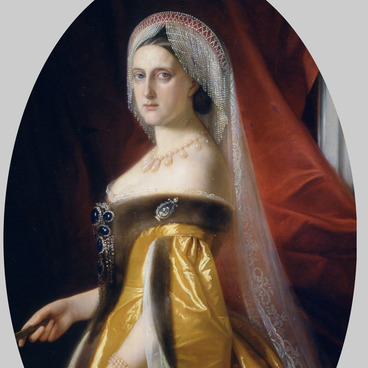The exhibition presents the Portrait of Veniamin Rumovsky, Bishop of Arkhangelsk. The portrait created in the second half of the 18th century demonstrates some techniques of the parsun painting. Parsuns were early portraits made in the 17th century in Russia that were still influenced by icon painting.
The author of the portrait is unknown, but a deep interest in the depicted bishop’s character suggests that the portrait could have been painted in St Petersburg. Apparently, the portrait is related to the Synod, i.e., an institution that governed the Russian Church. The artist Alexei Antropov headed a group of icon painters and non-icon artists, who worked under the Synod. Perhaps, the portrait was painted by a master of his circle.
Veniamin Rumovsky studied at the seminary of the St Alexander Nevsky Monastery in St Petersburg, and later headed it as rector. Subsequently, he governed the diocese of Arkhangelsk for 20 years. During this period, he was engaged in the spiritual education of young people, restoration of monasteries, and construction of churches. During his governance, a bishop’s house with an art gallery was built in Arkhangelsk. The gallery contained portraits of Russian emperors and bishops of Arkhangelsk. The portrait presented at the exhibition was also part of the collection located in the bishop’s house gallery.
Bishop Veniamin was interested in the country and church history. According to his order, monasteries and churches of the diocese introduced memorial books to record historical and current important events. In churches archives, he collected documents, ancient manuscripts, and annals that formed the basis for his work A Detailed Historical Description of the Diocese of Arkhangelsk.
Bishop Veniamin became famous as a spiritual writer. While studying at the seminary, he learned foreign languages and worked as a translator. His book, A New Tablet, dedicated to Christian church services went through 17 editions.
While living in Arkhangelsk, the bishop wrote A Sacred History for Children. The book was published in St Petersburg and translated into several languages. At the end of the 18th century, Veniamin was sent to the diocese of Nizhny Novgorod, where he was elevated to the rank of archbishop.
The author of the portrait is unknown, but a deep interest in the depicted bishop’s character suggests that the portrait could have been painted in St Petersburg. Apparently, the portrait is related to the Synod, i.e., an institution that governed the Russian Church. The artist Alexei Antropov headed a group of icon painters and non-icon artists, who worked under the Synod. Perhaps, the portrait was painted by a master of his circle.
Veniamin Rumovsky studied at the seminary of the St Alexander Nevsky Monastery in St Petersburg, and later headed it as rector. Subsequently, he governed the diocese of Arkhangelsk for 20 years. During this period, he was engaged in the spiritual education of young people, restoration of monasteries, and construction of churches. During his governance, a bishop’s house with an art gallery was built in Arkhangelsk. The gallery contained portraits of Russian emperors and bishops of Arkhangelsk. The portrait presented at the exhibition was also part of the collection located in the bishop’s house gallery.
Bishop Veniamin was interested in the country and church history. According to his order, monasteries and churches of the diocese introduced memorial books to record historical and current important events. In churches archives, he collected documents, ancient manuscripts, and annals that formed the basis for his work A Detailed Historical Description of the Diocese of Arkhangelsk.
Bishop Veniamin became famous as a spiritual writer. While studying at the seminary, he learned foreign languages and worked as a translator. His book, A New Tablet, dedicated to Christian church services went through 17 editions.
While living in Arkhangelsk, the bishop wrote A Sacred History for Children. The book was published in St Petersburg and translated into several languages. At the end of the 18th century, Veniamin was sent to the diocese of Nizhny Novgorod, where he was elevated to the rank of archbishop.



